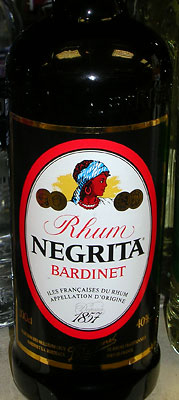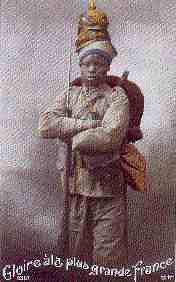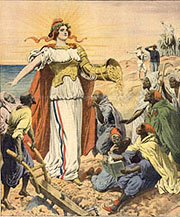When Miner Seymour started recruiting performers to Old Settlers Inn 12 years ago, he couldn’t pay them much, so staying the night at his family’s house was part of the deal. At breakfast, Miner asked performers for names of others he should call to book.
When he called singer-songwriter Susan Werner’s agent to see if Werner would come to south-central Kansas to play, Werner’s agent said, “Why would I send her out there?”
This is a story about a one-room venue in a small town. It’s the story of an Ohio transplant who envisioned a space for creativity. It’s a story about a piece of culture that blurs red state identity and paints a different picture than news reports on the state school board, evolution or Thomas Frank’s book What’s The Matter With Kansas?, which pondered why Kansans vote against their own interests. This is the story of the gathering power of music.
Old Settlers Inn is in Moundridge, a town of almost 1,600 people. It’s about an hour from Wichita and a half hour from Hutchinson. It’s an area thick with Mennonite culture and religion, where some people have distinctive Moundridge speech patterns and last names. There are six Mennonite churches, a history of high school debate and forensics championships, and an obsession with Moundridge Wildcats basketball. It’s an unlikely place to start a music venue for national performers.
Yet Old Settlers Inn has become a musical stand-by in the region. It’s the anchor date for performers on a circuit that includes Kansas City venues, West Side Folk in Lawrence, the Birdhouse in Manhattan, the Listening Room in Hastings, Nebraska, and sometimes the Blue Door in Oklahoma City. Cheryl Wheeler, a country-folk songwriter from New England, has termed this the “Silo Circuit.”
Old Settlers draws people from bigger cities to Moundridge for music. Almost half the crowd now drives in from Wichita, Kansas’s largest city. There are 40 zip codes in Miner’s audience database.
Still, Miner expects new performers to be skeptical. He imagines musicians driving toward Moundridge from Kansas City according to his directions: Highway 50, then 150, then 56 through the Flint Hills. He imagines they are surprised that Kansas isn’t flat at all. He imagines them driving west to where the land flattens, between the towns of south-central Kansas, where winter wheat pushes green shoots into wide, square-mile fields. He imagines them driving into Moundridge on a Sunday afternoon, when there is hardly a car on main street, and wondering, “Who the hell set this up?”
Main street, where Old Settlers sits behind a limestone storefront, is called Christian Avenue. The corner Conoco station is always open and the Country Kitchen is full on German Buffet night. Further down the block, The Lean-To bar has closed for good.
Inside the inn
Old Settlers isn’t a real inn, but people spend about a dozen Sunday evenings a year there, eating soup and listening to music in a long, narrow room with beige walls and black soundboard borders. A high white ceiling stretches above rough wooden floorboards and the stage, which emerges from the long left wall and is only a few feet off the floor. It’s covered in large marbled tiles and the wall behind it is painted as a marble arch over blue sky and wispy clouds. The face and dove of Picasso’s L’homme en Prole a la Paix, which he reportedly drew for the peace movement, is incorporated into the arch. A painted banister creates the vision of a performer on a circular, outdoor balcony in front of a perfect sky.
For the audience, the 150 seats are less romantic. Wooden folding chairs flank three sides of the stage and fill the floor. Some listeners sit on the bleacher pieces and church pews in the back of the room.
Behind the performance room is the lavender-walled kitchen, where people line up at the counter for the soup-of-the-day. Valetta, Miner’s wife, sells her famous cobbler and key lime pie. At the end of the counter a poster of Wendell Berry’s Manifesto: The Mad Farmer Liberation Front hangs on the wall, declaring:
Love the quick profit, the annual raise,
vacation with pay. Want more
of everything ready-made. Be afraid
to know your neighbors and to die.
And you will have a window in your head.
Not even your future will be a mystery
any more …
Across the room, a poster advertises cider made in the Seymours’ orchard. Another wall is filled with autographed photos of Old Settlers’ performers, including Greg Brown, Tim O’Brien, Darrell Scott, Cheryl Wheeler, Janis Ian, Martin Sexton, Jeff Black, Susan Werner, Slaid Cleaves and Guy Davis. On the edge of this collage is a sign that says “Peace is Patriotic.”
The congregation
On the day of a show, professors, teachers, students, farmers, doctors, lawyers, business people and artists start arriving around 4:15 p.m. Miner, who wears a bushy, golden-grey beard and button-down plaid shirt, spends his time between the main room and a huge closet used as the performer’s dressing room. In his strident, ornery voice, Miner chats up the crowd and checks in with the musicians. It’s a mostly 30-and-older crowd, some dressed in suit jackets, some in sweatshirts, some in overalls. They are music aficionados who bring Miner new music to listen to. They are also friends who simply trust him to put on a good show.
People here know each other, and some have been at every show since Miner started Old Settlers. Once the entire front row — all season-ticket holders — went out for dinner before a show. Before the show starts, people mill and talk to each other. The ones who drove from out-of-state are soon chatting with regulars.
After 12 years, the Old Settlers audience is still mostly out-of-towners, although there are some local regulars. In general though, the population of Moundridge and the Old Settlers audience do not reflect each other. Miner thinks people like to go to other people’s towns to do things. After all, it’s a nice Sunday drive through rural Kansas. But he feels like Moundridgers still think, “If it’s in our town, how good can it be?”
Small stories
When songwriter Louise Taylor drives across Kansas, heading to her home in Arkansas, she likes listening to Midwest agriculture reports on the radio and trying to decode the beef and grain prices. Sometimes, Louise stops in Kansas and stays overnight at Miner and Valetta’s house. She first met them in 1996 when she played at Old Settlers Inn, and she’s been back to play three times since. Miner and Louise have become good friends, and Miner recently became her agent — his first shot at the enterprise. Louise says the main reason Miner is her agent is because of Valetta’s cherry pie.
Louise believes that people from small towns are more willing to listen to the kind of storytelling she does in her songs. Louise and Miner both say Midwesterners aren’t inundated with shows like those on the coasts, and Kansans are eager to have performers come to them.
When a song moves the crowd at Old Settlers, Louise and Miner can tell. There are no hoops and hollers. Instead, there’s a slight pause — a silence — after the song and before the applause begins.
When she plays at Old Settlers, Louise casts spells on the audience with her poetry and her heavy voice. She’s tall and imposing with a sturdy smile and long, curly brown hair. She fuses her singer-songwriter craft with country-blues, jazz textures, and finger-style guitar playing.
There aren’t many frills about Old Settlers, but Louise says it’s the perfect environment for performers. There are warm personalities, food, and a ready and willing audience. Old Settlers’ performers are treated — and paid — well. Miner can guarantee performers an unusual bonus for a venue this size: $1,000 and a full house. That’s because Miner doesn’t try to make his own living off the ticket price, which now averages $15 a show. Plus, the venue’s good sound and good stage aren’t terribly common in the world where Louise plays.
Coming home
There wouldn’t be an Old Settlers Inn if Miner hadn’t met his wife Valetta while doing pro bono accounting for a Columbus, Ohio, medical clinic. Valetta, who had just returned from working in Africa, was a nurse at the clinic. She was a farm girl from Kansas, not the kind of girl Miner was supposed to marry. His wealthy Ohio family expected him to be a professional, he knew, and to marry a Theta. But this wasn’t what Miner wanted.
In 1985, after living and working in the Northwest — and getting married — the Seymours moved to Kansas. Miner had been studying architecture and doing construction work, and he and Valetta began building a house next to the farm where she grew up. It was a few miles outside Moundridge, on North Old Settlers Road. Soon, their daughter Kate was born.
Valetta knew the Mennonites who farmed the flat fields and lived in Moundridge, but Miner had no connections to the area. He couldn’t believe people identified each other by which church they attended. He didn’t have a group — or a place — with which he identified. But he could relate to the Mennonite values of living simply, pacifism, and a passion for four-part singing.
The small town wasn’t an easy place to be a newcomer; regional history runs deep. Moundridge was born of railroad routes and transplanted roots of homesteaders from Europe, Canada, and other parts of the Midwest. The largest group of immigrants were the German-speaking Mennonites who migrated from Russia to the area in 1874 and brought with them a new winter wheat, which eventually made Kansas the leading producer of hard wheat. Around Moundridge, people still farm the grain.
The Seymours can see the horizon — the curve of the earth — from their front porch. Miner slowly fell in love with Kansas. Although standing in the middle of an empty square mile used to spook him, he likes the vastness now. Once, when they were snowed in on the day of an Old Settlers show, Miner and Valetta strapped on their cross-country skis and sailed across the stubble fields into town.
Putting down roots
It was soon after the move to Kansas in 1985 that Miner saw a building for sale on Moundridge’s main street. After living in the Northwest, he couldn’t believe the low price. He bought it immediately for $11,000 from the VFW without any idea what he’d use it for.
Then, he began to think about what he’d put into the 110-year-old structure that once held a pool hall, senior citizens center and a VFW. He and Valetta thought about opening a film house or a puppet theater for kids. The bottom floor was leased to a pizza joint, and pizza ended up paying the mortgage. The top floor, accessible only up a narrow, precarious and peeling stairway, was empty. It had been used for bingo and parties, so there were restrooms and a food service area.
Eventually, Miner’s songwriter friend Anne Zimmerman told him there was a shortage of venues for her kind in Kansas. Miner got his answer.
The first show at Old Settlers was in 1993, after the upstairs walls had been stripped of decades of wallpaper and painted white with mint green trim. Seventy people came to hear the Waffles, a local old-time string band, play on the foot-high, corner stage. Valetta made chowder and bread to sell to the crowd. People sat at square tables, coffeehouse style. Miner made $37.
By the time The Kennedys drew 80 people to a show in March 1994, Old Settlers had hosted 12 shows and Miner still worried every Sunday if people would show up. At one show, only 27 people had come, and four shows had ended in a net loss for Old Settlers. A few Moundridge residents came to shows at the beginning, but the majority of people came from surrounding small towns.
The Kennedys had been touring with Nanci Griffith’s Blue Moon Orchestra. At the time, Miner didn’t even know who Nanci Griffith was. But Pete Kennedy befriended Miner and started providing names of performers who might play there. In February 1995, songwriter Brooks Williams was the first to attract concertgoers from Wichita.
Tending the flame
As Old Settlers’ popularity grew, Miner decided to move the venue downstairs to increase seating and accessibility in 2001. The pizza place below had folded and left a kitchen and dining area. Miner did all of his own construction work. He brought down the wooden folding chairs he’d bought at a rental yard in Hutchinson. He also brought down the wooden theater seats, grouped in threes, that he acquired from Moundridge High School. He used two church pews and elevated wooden bleacher seats from a tiny high school in northeast Kansas. Seating is tight, but Miner has tried to make it more comfortable by providing foam seat cushions, printed with the Old Settlers logo — a candle with rays of light arcing outward.
Old Settlers Inn is now operated by the non-profit Acoustic Arts Association, which Miner started. It includes five board members and is directed by Miner. There is also a radio program on KMUW called New Settlers Radio Hour, which plays live shows from Old Settlers and other places in the area. Miner uses his connections from Old Settlers to bring musicians to local colleges and larger performance venues.
The Seymours have never expected to make a living from the venue, and Valetta works as a nurse practitioner in nearby Hesston. On show days, a local family runs the kitchen and makes and serves the soup, bread and dessert. But Valetta is also in the Old Settlers kitchen after the show, helping clean and wash dishes. People are employed to do this (they get free tickets), but Valetta can’t help herself. Miner says it’s how she is — it might have something to do with her farm-girl roots.
Musical testimony
By now, Miner has used Old Settlers to put down roots in the region. For him, developing Old Settlers Inn has been an exercise in creativity, and his goal has always been to foster an artistic space. The soul of Old Settlers Inn has everything to do with why Miner loves living in small-town Kansas. It’s the phenomenon of the clerk at the bank, the guy at the lumberyard, and the waitress at the café in the next town also being on your sports team or members of a committee to which you belong. They shop at the same grocery store. And maybe go to the same church on Sundays. Old Settlers is a hybrid soul that feeds on this community’s desire to hear stories and songs from beyond south-central Kansas.
One recent evening, Old Settlers hosted musician Paul Thorn for a Saturday night show. A few minutes after 8 p.m., most people were snug in their seats. Miner hates announcing anything in front of a crowd, so as the house lights go down he asked Billy, Paul’s agent, if he wanted to do it.
“Welcome to Settlers Inn!” Billy said. The crowd didn’t care that he left off the “old,” and they erupted with applause and hoots. In the swinging kitchen doors, Paul waited in a western-style, white button-down open at the collar, jeans and black lace-up shoes with heavy tread. He used to be a boxer, and in 1987 he shared the ring with Roberto Duran on national television. After he quit boxing, Paul worked in a furniture factory and started playing local gigs at night. Since then, he’s been onstage with folks like John Hiatt and John Prine. Clearly, he has some song material behind his shaved head and stubble beard.
Paul walked through the chairs and applause and into the spotlight onstage. He sat down in the chair, about three feet from the audience, grabbed his acoustic guitar, and smiled. Then he played a full night of southern gospel, soul and country-blues.
Paul told the crowd he wasn’t used to going to a new town and having such a big turnout; usually, no one knows who he is. He narrated stories to the audience in his slow, thick southern accent and at one point invoked his heritage as a preacher’s son. “I feel like testifying tonight,” he yelled to the crowd, and then moved into the song “Ain’t Love Strange.” At one point, he got two women on stage to sing backup. On his more spare and serious songs, Paul turned inward and closed his eyes, but the audience was perched and listening until the end.
And that’s why Old Settlers Inn isn’t a bad place to testify. The story continues, on Sunday after Sunday in Moundridge, before the work week begins. At 2 p.m., Miner drives in to town, opens up Old Settlers, and prepares the stage and dressing room. Within an hour, performers show up for sound check. Then the cooks arrive, and at 4 p.m., the doors open. The parking spots on main street begin to fill up as people arrive at Old Settlers Inn to meet their friends. They look forward to hearing stories. They gather to listen.
- Follow us on Twitter: @inthefray
- Comment on stories or like us on Facebook
- Subscribe to our free email newsletter
- Send us your writing, photography, or artwork
- Republish our Creative Commons-licensed content























